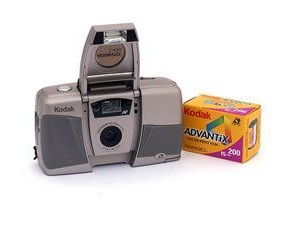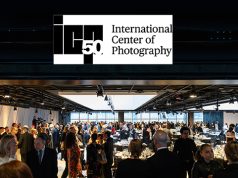
The ingenious little APS (Advanced Photo System) 24mm cartridge—and its quixotic trio of smaller-than-35mm formats—that was supposed to save the tattered shreds of the mass film market from the impending digital onslaught is now officially kuput.
Indeed, the recent announcement by Fujifilm that it is officially discontinuing its Nexia APS film line is merely the final coup de grace, since Fujifilm had stopped APS film production in 2011 and was simply selling off existing stock.
APS was introduced with great fanfare in 1996 by a consortium of camera and film manufacturers; the film was marketed under the Advantix brand by Eastman Kodak, Nexia by Fujifilm, Futura by Agfa and Centuria by Konica, with other camera makers offering dedicated APS camera models.
The film, on a polyethylene naphthalate (PEN) base, had a transparent magnetic coating that provided an information exchange (IX) system capable of recording data for each exposure. But this was typically used only to denote the print aspect ratio, date and time for photofinishing applications. Unlike 35mm, the film was stored in the cartridge after processing and numbered symbols on the cartridge indicated whether the film was exposed, processed or partially exposed.
The full APS “H” (for High Definition) format measured 30.2×16.7mm, a 16:9 aspect ratio, and two smaller formats were formed by cropping during printing. The “P” Panoramic 3:1 aspect ratio format measured 30.3×9.5mm, and the “C” Classic 3:2 format measured 25.1×16.7mm, roughly the dimensions of the “APS-C-format” sensors in consumer DSLRs and compact system cameras. It is a sublime irony that the little film cartridge that couldn’t may well live in perpetuity as a digital sensor size designation.
While some will doubtless regard APS as a noble attempt to salvage the unsalvageable, others are quite likely to read the APS obituary with great relish. One is Ken Rockwell, whose brilliantly scathing analysis of what he calls the “Amateur Photo System” has been posted online since 2008. To quote from his intro “. . . APS was a 1990’s conspiracy to get consumers to buy new cameras, pay more for less film, and just as importantly, to strong-arm every photo lab into having to buy new processing equipment, often costing $500,000 per setup, just to stay in business. . . . APS gave crummier results . . . and there were fewer places to get it developed. . . . so it died on the vine.”
If you have a taste for incisive irony and want more of the same, go to kenrockwell.com/tech/aps.htm.





